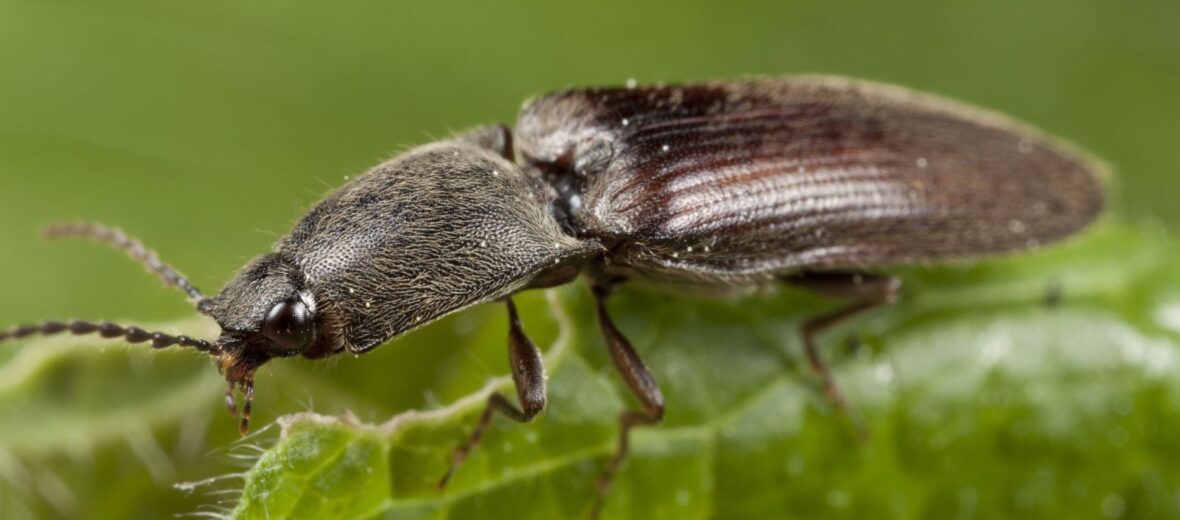
Remember the click beetle, from when you were a kid? You’d intentionally put it on its back so it would make a clicking sound and bounce up in the air. These beetles are known the world over, and with 9,300 known species, it’s no wonder why they’re famous. There are 965 known species in the United States alone. These insects may be fun for kids to play with, but they are mostly considered agricultural pests that cause millions of dollars in damage to potato, corn, and wheat harvests each year. While some species are listed as Near Threatened, Vulnerable, or Endangered, most are listed as Least Concern by the IUCN. This article is on special request from my oldest son, Jon.
First the Stats…
Scientific name: Elateridae
Length: Up to 1.77 inches
Lifespan: Up to 4 years, depending on species and climate
Now on to the Facts!
1.) The grubs can be found in the soil, while adults can be found on and around plants and in various wooded substrate.
2.) The larvae eat roots and seeds. Adults eat pollen, nectar, flowers, and some also eat aphids.
3.) “How do they do it”, you ask? They have a special spine of cartilage between their thorax (chest) and abdomen (stomach) that can be snapped from an arched position. This creates an audible clicking sound and catapults the insect into the air and hopefully out of a predator’s jaws.
4.) These critters also feign death and can fake being dead for hours at a time. “If I don’t move, then I won’t get eaten.”
5.) They are nocturnal (active at night).
But wait, there’s more on the click beetle!
6.) Click beetles are also engage in positive phototaxis (attracted to light), like moths.
7.) Birds, bats, lizards, frogs, and praying mantis (to name a few) all prey on click beetles.
Did you know…?
Most everyone knows of their famous flicking ability, but they can also fly.
8.) During winter, these beetles undergo torpor. This involves a lower body temperature, heart rate, breathing rate, and metabolic rate.
9.) Some click beetles are capable of producing bioluminescence, like a firefly.
10.) Females can lay, based on the species, up to thousands of eggs during the summer months.
11.) As kids, we used to turn them over onto their backs to see how high they could flick into the air. This was before video games, of course.
Now a Short Click Beetle Video!
Also, check out the Critter Science YouTube channel. Videos added frequently!
Want to suggest a critter for me to write about? Let me know here.



